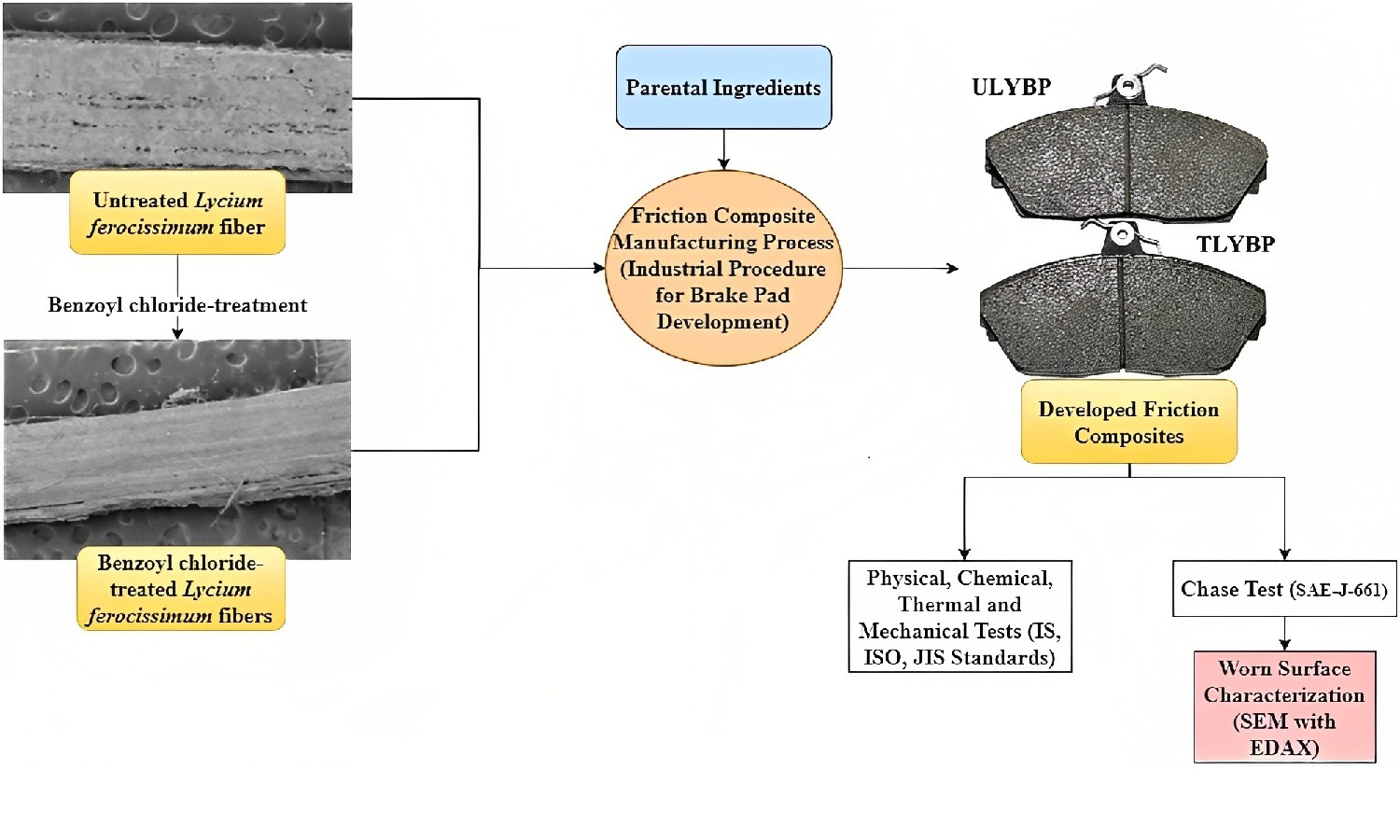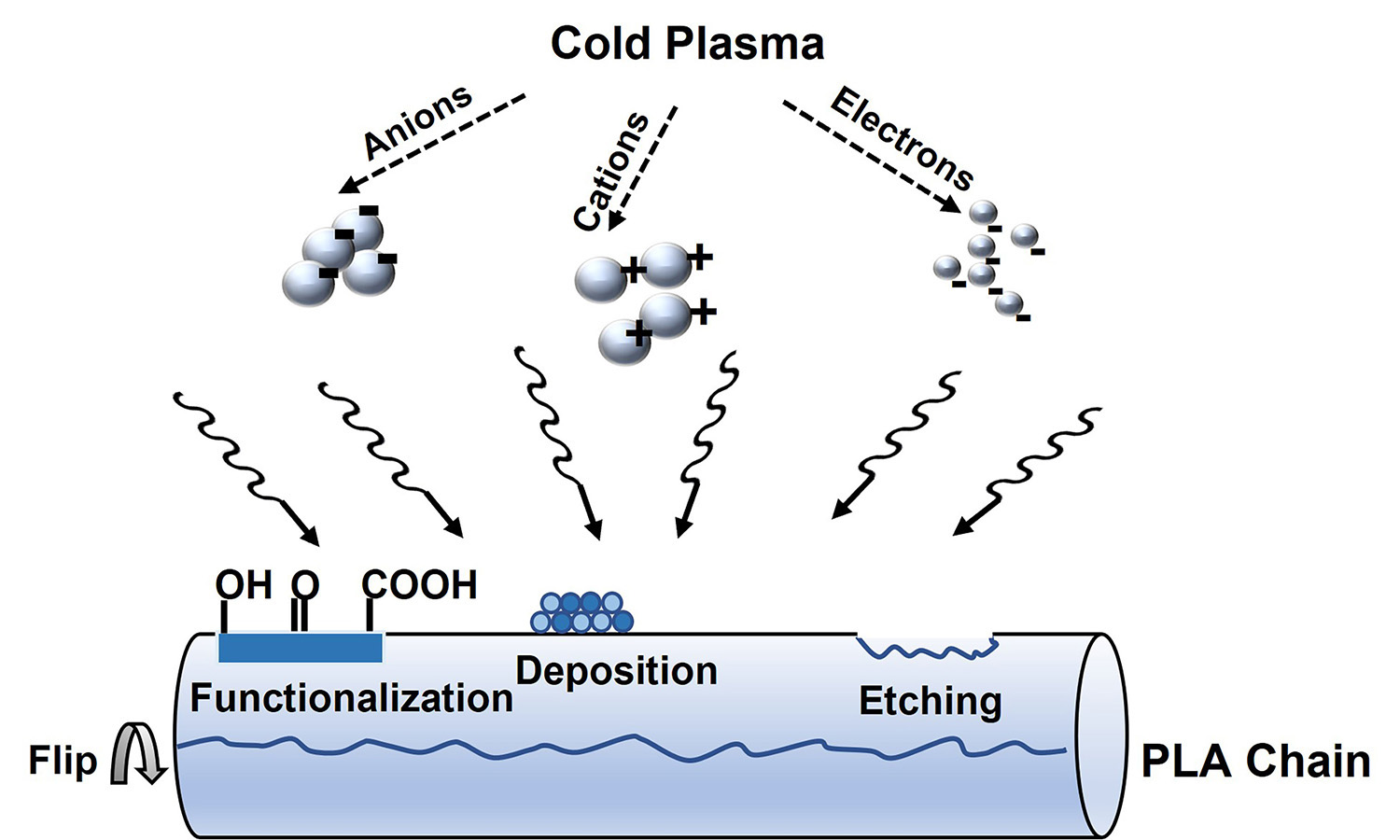Friction composite formulation from Lycium ferocissimum fibers as natural reinforcement for braking applications
Saikrishnan Ganesh, Jayakumari Lakshmanan Saraswathy, Vijay Raghunathan, Vinod Ayyappan, Sundarrajan Dharmakrishnan, Sanjay Mavinkere Rangappa, Suchart Sienghcin
Vol. 18., No.2., Pages 144-159, 2024
DOI: 10.3144/expresspolymlett.2024.12
DOI: 10.3144/expresspolymlett.2024.12
GRAPHICAL ABSTRACT

ABSTRACT
The increase in environmental consciousness and waste-to-wealth concepts in the automobile sector has led to the use of natural fibers in desirable quantities. The current study deals with the extraction, treatment, and utilization of Lycium ferocissimum stem fibers for friction composite in braking applications. The fibers of Lycium ferocissimum were extracted through manual retting and subsequently treated with benzoyl chloride. Both the benzoyl chloride treated and untreated fibers of Lycium ferocissimum were employed as reinforcements in the formulation of a friction composite, following the standard practices of the industry, and the comparison was made using commercially available friction composite. The developed friction composites were tested for original equipment manufacturer quality requirements following industrial Standards. The friction composite’s tribological behavior was analyzed using the Chase test following the Society of Automotive Engineers standards. The worn surface characteristics were analyzed using scanning electron microscope. The test results elucidated that benzoyl chloride-treated Lycium ferocissimum fibers-based friction composites showed good frictional properties with better wear resistance compared to others, having a weight loss of 5.4%.
RELATED ARTICLES
Yiqing Xu, Haiyan Liu, Shuni Ying, Qunfang Lin, Huihuang Ma, Xiaodong Zhou
Vol. 18., No.11., Pages 1164-1175, 2024
DOI: 10.3144/expresspolymlett.2024.88
Vol. 18., No.11., Pages 1164-1175, 2024
DOI: 10.3144/expresspolymlett.2024.88

This study examines the interface of biodegradable polylactic acid (PLA) fiber-reinforced thermoplastic starch composites to address market demand for their mechanical properties. We first used a combination of solution treatment (acid/alkali) and plasma modification to modify fibers. This method improves surface roughness and increases oxygen-containing groups of the fibers, which enhances the mechanical interlocking at the interface and promotes stronger hydrogen bonds between fibers and starch, respectively. Their synergy effect significantly strengthens interfacial adhesion and interfacial shear strength (IFSS). In contrast, cold plasma modification alone results in a smaller increase in IFSS because of its lower roughness and fewer oxygen-containing groups. Alkaline treatment and increased cold plasma power level are more conducive to higher IFSS through stronger synergistic effects. Although IFSS improved from 2.41 to 4.40 MPa after alkali and plasma treatments of 200 W, the tensile strength decreased from 811.46 to 351.55 MPa. To optimize the mechanical properties of composite materials, it is crucial to choose a kind of modification method that balances IFSS enhancement and tensile strength reduction.



